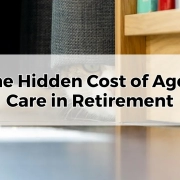How much is carer payment and allowance?
Table of Contents
ToggleCaring for someone you love is a noble and vital role, but it can also bring about financial challenges. Whether you’re looking after an elderly family member, a sick friend, or a disabled loved one, the costs of caregiving can add up. That’s why it’s important to know about the financial support available to caregivers like you.
In this blog post, we’re here to shed light on a valuable resource: Carer Payment and Allowance. These government-funded benefits are designed to help ease the financial burden that often comes with providing constant care. We’ll break down the essentials in a clear and straightforward manner, so you can better understand how these programs work and how they can support you in your caregiving journey.
Financial support for carers
Caring for someone who needs your help is a big responsibility. It’s not only emotionally rewarding but also comes with its own set of challenges. From covering daily living expenses to managing additional costs that come with caregiving, it can sometimes feel overwhelming. That’s where financial support for carers comes in.
There are three main types of financial support available to carers: Carer Payment, Carer Allowance, and Carer Supplement. These are government-funded benefits designed to provide you with the financial assistance you need to navigate the demands of caregiving.
Carer Payment
Carer Payment is a regular payment provided to those who dedicate their time to providing constant care at home. This payment is intended to help cover basic living costs, recognizing that caregivers often face financial strains due to their commitment to caregiving.
Carer Allowance
Carer Allowance is an income supplement aimed at assisting you with extra costs related to your caregiving responsibilities. It acknowledges that caring goes beyond daily expenses and offers financial support to help you manage the additional financial burdens that may arise.
Carer Supplement
Carer Supplement is an annual lump sum payment that offers extra financial assistance to recipients of Carer Payment or Carer Allowance. This is an annual lump sum payment of $600. This additional payment recognises the ongoing dedication and effort you put into caregiving and provides a boost to your financial resources.
Eligibility and verification
Before you can access the financial support offered by Carer Payment and Allowance, it’s important to understand the eligibility criteria and verification process. These requirements ensure that the benefits are directed to those who genuinely need them.
Carer Payment eligibility
To be eligible for Carer Payment, you must provide constant care to someone who is frail, aged, ill, or disabled. This care should be provided at home, and you should be unable to fully support yourself through substantial paid employment due to your caregiving responsibilities.
Verification of care needs
Verification of your caregiving role and the care needs of the person you’re looking after is essential. This is done through medical reports and assessments. The Adult Disability Assessment Determination 2018 (ADAT) plays a crucial role in determining the level of care needed and whether you meet the eligibility criteria.
Income and asset criteria
Both you, the caregiver, and the person you’re caring for must meet specific income and asset criteria to qualify for Carer Payment. This ensures that financial assistance is provided to those who genuinely require support due to their caregiving role.
Tailored payment rates
Carer Payment offers different rates for singles and couples to account for varying living costs. These rates are adjusted twice a year to ensure that the payment remains relevant and reflective of the changing economic landscape.

Carers allowance and its details
When you’re a caregiver, the responsibilities often extend beyond basic living expenses. That’s where Carers Allowance comes into play. This financial assistance is designed to help you manage the additional costs that can arise due to your caregiving duties.
The amount and adjustment
The current amount of Carers Allowance is $153.50 per fortnight. This payment is designed to provide regular support to caregivers who are dedicating their time to caring for others. It’s important to note that the amount may be subject to adjustments, so staying informed about any changes is essential.
Managing extra expenses
Caring for someone often comes with unforeseen expenses. Whether it’s transportation costs, medical supplies, or other caregiving-related necessities, Carers Allowance is there to help ease the financial strain that these additional costs can bring.
Continued financial assistance
Even in special circumstances like hospitalisation of the person you’re caring for, Carer Payment and Allowance can continue for up to 63 days. This ensures that your financial support doesn’t abruptly stop during critical times. Additionally, you’re allowed 63 days of annual respite without losing your payments, giving you flexibility for breaks.
Regular income reporting
When receiving financial support, it’s essential to report all income sources accurately. This includes income from work, investments, pensions, and any other sources. By keeping your income reporting up-to-date, you ensure that you receive the appropriate level of financial assistance.

Application process
Now that you’re familiar with the financial assistance available through Carer Payment and Allowance, it’s time to learn about the steps involved in applying for these valuable benefits. The application process may seem a bit daunting, but we’re here to break it down into simple, easy-to-follow steps.
Step 1: Setting up your MyGov account
To get started, you’ll need to have a MyGov account. If you don’t have one already, it’s easy to set up. This account will be your central hub for managing your interactions with various government services, including applying for Carer Payment and Allowance.
Step 2: Identity verification
Ensuring your identity is verified is a crucial part of the application process. This helps maintain the security of the benefits and ensures that they reach the right individuals. Be prepared to provide valid identification documents as part of this step.
Step 3: Document uploads
As part of your application, you’ll need to provide supporting documentation. This could include medical reports, assessments, and any other relevant paperwork that verifies your caregiving responsibilities and the needs of the person you’re caring for.
Step 4: Completing the relevant forms
Completing the necessary forms is an essential step in the process. These forms gather important information about your caregiving situation, income, and assets. Filling them out accurately and thoroughly ensures a smooth evaluation of your eligibility.
Step 5: Income reporting
After your application is approved and you start receiving Carer Payment or Allowance, it’s important to stay on top of your income reporting. This means regularly updating the government about your income sources, ensuring that the financial assistance you receive remains accurate.
Step 6: Considerations for working
If you’re planning to work or study while receiving Carer Payment, there are guidelines to keep in mind. You can work or study up to 25 hours a week and still qualify for the benefits. This is important information to be aware of if you’re managing caregiving responsibilities alongside other commitments.
Working and studying while receiving carer payment
As a dedicated caregiver, managing your caregiving responsibilities alongside work or studies can be a juggling act. The good news is that you can continue to receive Carer Payment while working or studying, provided you adhere to some important guidelines. Let’s explore how you can strike a balance between caregiving and other commitments.
The 25-hour limit
You can work or study for up to 25 hours a week and still qualify for Carer Payment. This means you have the flexibility to pursue your career or education goals while providing the care your loved one needs. This allowance acknowledges the diverse responsibilities caregivers often have.
Means-tested payment
Carer Payment is means-tested, which means the amount you receive depends on your income. There’s a specific earnings threshold allowed per fortnight. This threshold takes into account your financial situation and ensures that you receive appropriate financial assistance while managing your other commitments.

As you continue your caregiving journey, remember that you’re not alone. Government-supported financial assistance is available to lighten your load and provide relief from the financial challenges that caregiving can bring. Your commitment to caring is admirable, and the resources available to you are meant to recognize and support your essential role.









